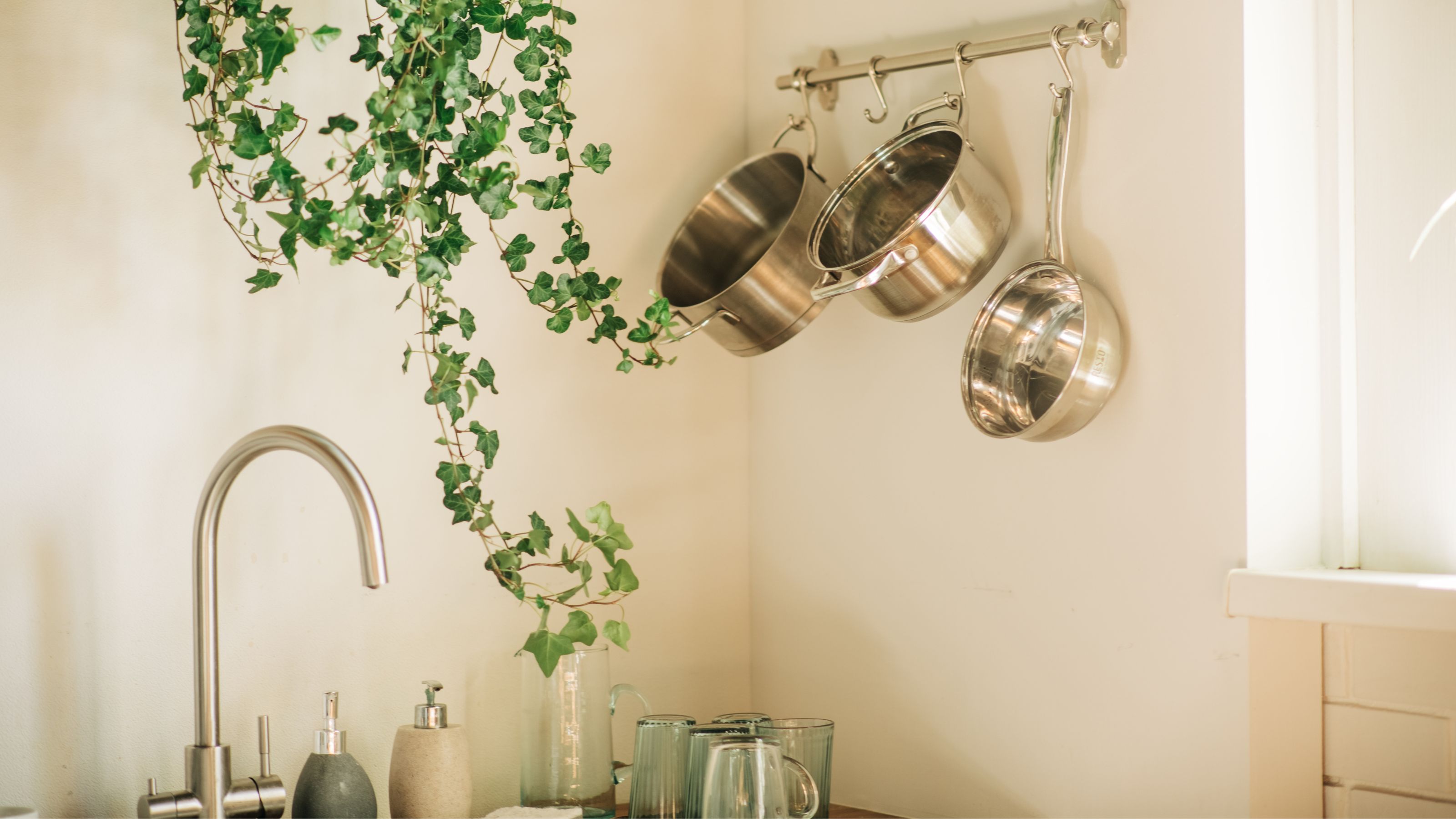How to season a stainless steel pan
Never get salty over burnt cookware again


Learning how to season a stainless steel pan requires no prior culinary experience. If anything, treating your non-toxic cookware will work in your favor if you've got poor cheffing skills.
Here's how it works. Before you've even started cooking with them, you can reduce the risk of scratching your pans and decrease the chances of having to scrub away burnt-on food. Seasoning involves coating the surface of your pots and pans with a layer of fat or oil, which then creates a protective barrier. Then — get this — instead of using soap to clean the stainless steel, you'll simply wipe it down and maintain it with salt.
Consider this the heat protection spray for your pans — except you don't have to do this every time you eat.
Good to know
Time: Up to an hour
Difficulty: Easy
WARNING: This guide involves heating oil to extremely high temperatures, so be careful when handling your pot or pan.
Here's what you'll need
- Access to warm water (i.e.: your faucet)
- A mild dish soap detergent — I like this unscented 365 Whole Foods dish soap from Amazon
- A non-abrasive dishwashing sponge — Scotch-Brite non-Scratch Sponges (from Amazon) are good
- Cooking oil with a high smoke point — Peanut oil or coconut oil both work well and you can grab them on Amazon if you need to
- An oven
- Paper towel — You can't beat Bounty in my opinion, plus it's available at Amazon
- Table salt
- An oven mitt (or tea towel) — you'll need this especially if you're taking the pan out of the oven.
How to season a stainless steel pan
Step 1: Wash the pan
Start by giving your pan a thorough washing, especially if you’re using your stainless steel pan for the very first time. Use a dish soap (like the unscented 365 Whole Foods dish soap from Amazon) and warm water to gently scrub the inside and outside of the pan. Rinse and dry it thoroughly.
Get small space home decor ideas, celeb inspiration, DIY tips and more, straight to your inbox!
Step 2: Coat your stainless steel pan with oil
Coat the inside of your stainless steel pan with a layer of cooking oil. Preferably, an oil with a high smoking point like peanut oil or coconut oil, both available at Amazon if you don't have any. Use your fingers to coat the entire interior of the pan, including the inner rim.
Step 3: Heat the oiled pan
The pan can either be seasoned on your stovetop or in the oven. If using the stove, place the pan over medium heat. Let it sit until the oil begins to smoke then remove it from the heat. If using an oven, place the oiled pan in a 350-degrees Fahrenheit oven for an hour.
Step 4: Cool the pan
Once the pan has been removed from the heat, let it cool until it can be handled. Using a paper towel, wipe all the excess oil (Bounty is super absorbent and on Amazon). Before storing the pan in your cupboard, place a paper towel or two between each stacked pan to avoid scratching.
Step 5: Cleaning your seasoned pan
To maintain the seasoning on your pan, avoid washing it with soap. Instead, wipe the pan clean with a paper towel after each use. If you find that food is still sticking, scrub the pan with oil and table salt then wipe it clean with a paper towel. If you have to wash the pan with soap, use the steps above to re-season it before you use the pan again.
FAQs
Should you season new stainless steel pans?
The experts at Overstock say that: "Seasoning your pans can be a convenient solution to stop food from sticking to your cookware. Most foods, when cooked properly, typically don't stick to stainless steel pans, but eggs and egg dishes tend to stick more easily. A seasoned pan will help prevent sticking." They also add that preheating a pan can help, too.
How do you clean stainless steel pans after seasoning?
As well as following step five in our guide, using baking soda to clean your stainless steel pan is also effective. To do this, you'll need to mix about 1/4–1/2 of a cup of baking soda (we always recommend the Arm & Hammer one from Amazon) with a full pan of water. Bring it to a boil and you'll notice any brown stains lift. Rinse with water and wipe it off with a paper towel.

Hi, I'm the former acting head ecommerce editor at Real Homes. Prior to working for the Future plc family, I've worked on a number of consumer events including the Ideal Home Show, Grand Designs Live, and Good Homes Magazine. With a first class degree from Keele University, and a plethora of experience in digital marketing, editorial, and social media, I have an eye for what should be in your shopping basket and have gone through the internal customer advisor accreditation process.